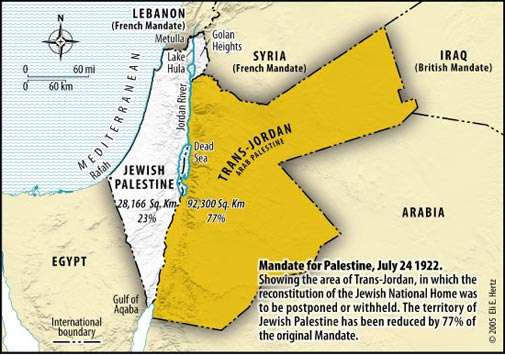Evidence that Palestine was never a nation
The Myth of a Historical Palestinian State
For decades, there has been ongoing debate and conflict surrounding Israel and the Palestinian territories. Despite the prevalence of this issue in global discourse, many individuals in the West protesting on the streets lack a comprehensive understanding of the region’s intricate history. It is crucial to examine the facts and delve into the historical context to unravel the truth about the notion of a Palestinian state.
The Roots of the Conflict
The origins of the Israeli-Palestinian conflict can be traced back to the early 20th century when the British Empire played a pivotal role in shaping the region’s political landscape. In 1917, the Balfour Declaration expressed Britain’s support for the establishment of a national home for the Jewish people in Palestine. This declaration was a significant milestone, as it acknowledged the historical and cultural ties between the Jewish diaspora and the land of Palestine.
However, the British Empire’s subsequent actions sowed the seeds of discord and laid the foundation for the ongoing conflict. In 1922, a critical decision was made to divide the territory designated for the Jewish National Home. The region known as Transjordan, comprising approximately 77% of the original mandate, was severed from the Jewish homeland and allocated to the Arab population.
The Maps Tell the Story
Historical maps provide a visual representation of the shifting borders and territorial allocations during this tumultuous period. The 1919 map of the British Mandate Jewish National Home clearly illustrates the intended boundaries of the Jewish homeland, encompassing both sides of the Jordan River. This territory, stretching from the Mediterranean Sea to the Arabian Desert, was destined to become the reconstituted Jewish National Home, as promised in the Balfour Declaration.
However, the 1922 Mandate for Palestine significantly altered this plan. The map from this period depicts a stark division, with the white area on the left representing what would largely become modern-day Israel, including the Gaza Strip and the majority of the West Bank. Conversely, the yellow section on the right, known as Transjordan, was designated as the Arab portion of the Palestinian territories, effectively prohibiting Jewish settlement in this region.
The Two-State Solution and Its Failure
The allocation of Transjordan to the Arab population was initially intended as a two-state solution, providing a homeland for both the Jewish and Arab populations. Ironically, while Jewish settlement was prohibited in Transjordan, Arab populations were not barred from residing within the Jewish territory, which later became Israel. This disparity has contributed to the ongoing tensions and claims of injustice from both sides.
Despite the initial agreement on the two-state solution, the subsequent rejection of this plan by various parties fueled further conflict. Calls for the destruction of Israel and the establishment of a Palestinian state “from the river to the sea” emerged, undermining the very premise of the two-state solution and perpetuating the cycle of violence and instability.
The Golan Heights and the Expansion of Israeli Sovereignty
In more recent times, the United States’ recognition of Israel’s sovereignty over the Golan Heights in March 2019 further reshaped the territorial landscape. This decision effectively consolidated Israeli control over the strategic Golan Heights region, which had been a contested area since the Six-Day War in 1967.
Consequently, the map of the region has undergone significant transformations, with the West Bank now appearing significantly larger than its original allocated territory. This expansion has fueled accusations from Palestinian groups of land encroachment and a disregard for the principles of the two-state solution.
The Elusive Quest for Peace
Despite numerous attempts at peace negotiations and international interventions, the Israeli-Palestinian conflict remains one of the most intractable and complex issues in the modern era. The crux of the matter lies in the divergent historical narratives and deeply rooted claims to the land from both sides.
Proponents of the Palestinian cause often assert that Palestine has been an Islamic country for centuries, and the establishment of Israel represents an illegal occupation and theft of their rightful homeland. However, historical evidence suggests that prior to the mid-20th century, there was no distinct Palestinian state, flag, president, prime minister, or sovereign entity that could lay claim to the land.
In contrast, the Jewish people trace their ancestral roots and cultural heritage to the land of Israel, dating back thousands of years. The creation of the modern state of Israel in 1948 is seen as a reclamation of their historical homeland and a fulfillment of the Zionist aspiration for a secure and sovereign Jewish state.
Reconciling these divergent narratives and addressing the complex issues of borders, security, and the rights of both populations remains a formidable challenge. However, it is essential to acknowledge and understand the historical context and the motivations of all parties involved to forge a path towards a just and lasting resolution.
Conclusion
The Israeli-Palestinian conflict is a multifaceted and deeply rooted issue that defies simplistic narratives or one-sided approaches. While emotions and ideological stances often fuel the rhetoric surrounding this conflict, it is imperative to approach the matter with an objective and fact-based understanding of the region’s complex history.
By examining the maps, territorial allocations, and the evolving political landscapes of the past century, a more nuanced picture emerges. The notion of a historical Palestinian state with defined borders, governance, and sovereignty prior to the mid-20th century is not supported by evidence. Instead, the region was subject to shifting boundaries and competing claims, shaped by the interventions of colonial powers and the aspirations of both the Jewish and Arab populations.
Ultimately, the path to a lasting and equitable resolution lies in acknowledging the historical grievances, legitimate aspirations, and rights of all parties involved. Only through an open and honest dialogue, grounded in historical facts and a willingness to compromise, can the cycle of violence and conflict be broken, paving the way for a sustainable and mutually agreed upon solution to this enduring conflict.


